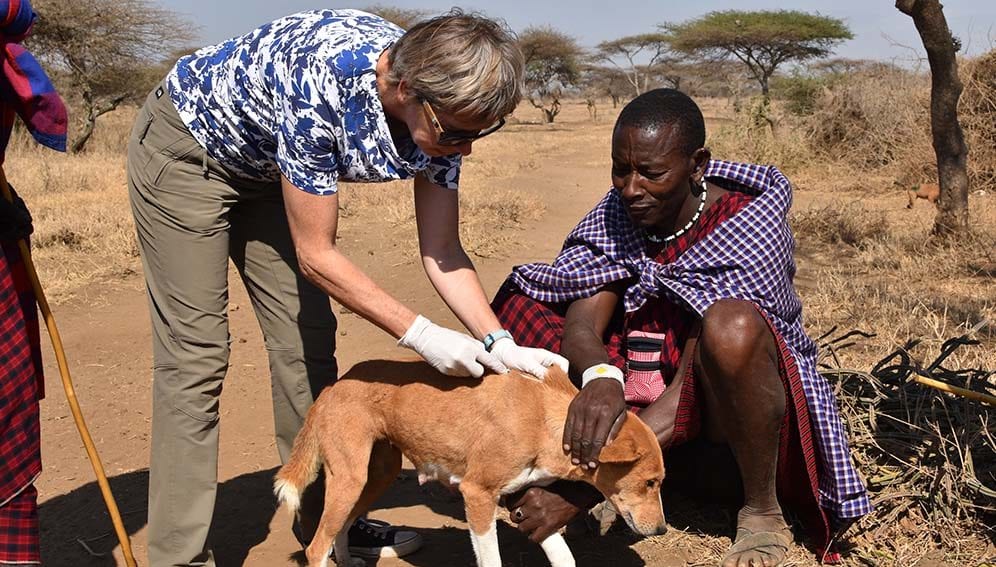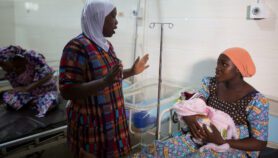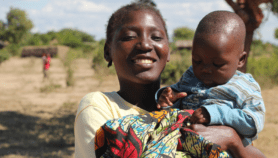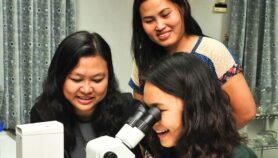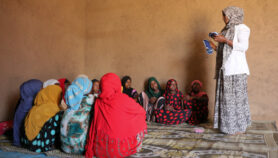By: Ruth Douglas
Send to a friend
The details you provide on this page will not be used to send unsolicited email, and will not be sold to a 3rd party. See privacy policy.
Life could have been very different for Professor Sarah Cleaveland, a British veterinary epidemiologist, who has dedicated much of her career to the fight against rabies.
As a young female graduate with a First Class degree, she was directed by a careers advisor towards a job as a typist. But so affronted was she by the suggestion, that it propelled her into vet school, she tells SciDev.Net. Last month she received the honour of being appointed a fellow of Britain’s Academy of Medical Sciences, adding to a list of accolades.
Cleaveland’s research on rabies in the Serengeti provided evidence of the feasibility of eliminating the disease in dogs. International organisations such as the World Health Organisation (WHO) want to see this goal achieved in humans by 2030.
The virus, which causes damage to the brain, is most common in Africa and Asia, where it is usually transmitted to humans via dog bites. Globally, it kills at least 59,000 people a year.
You’re renowned for your work with rabies in Tanzania. Tell us about that…
I accidentally got involved with rabies when I was working in Tanzania on the Serengeti Cheetah Project in 1990 when there was an outbreak of rabies in African wild dogs. As a vet, I was asked to get involved.
Because it’s a disease that has been studied for so long, I thought we knew everything that needs to be known about it, but digging into things further, I found there were a lot of gaps in our understanding, particularly in the African context, and I was curious to find out more.
I developed some project ideas and found funding to work on the problem for a PhD study. That was the start of the rabies work and it’s really grown from that. The platform and research programme that I established in the Serengeti has expanded and is now being led by colleagues who are taking it in really exciting directions.
That research provided estimates on the burden of rabies and evidence for the feasibility of eliminating rabies. What impact has that had?
When I was starting out, official statistics published through the WHO would officially report something like 200 deaths in Africa, and we knew that that was a major underestimate. So we developed an approach to estimate more realistically the true number of human deaths and came to a figure of about 100 times that which was officially reported. This method has been developed further to give a global estimate of almost 60,000 human deaths from dog-transmitted rabies. This was very important for raising awareness and getting anyone interested in doing anything about rabies at all.
We do have good tools to prevent and control rabies, so the question is why aren’t they being used? And the sorts of arguments I heard all the time were: ‘there’s too much wildlife in Africa, it’s a futile exercise,’ and ‘there are too many stray dogs, they’re impossible to vaccinate’. When that’s set against ‘it’s not a very important human disease problem’, it just leads to inertia and inaction.
So our work has been about chipping away at those barriers and asking ‘is there actually evidence to support this?’… and, one by one, all of these barriers have fallen down. It’s entirely feasible [to eliminate the disease]. Wildlife reservoirs should not present a problem to eliminating human deaths, dogs are accessible, and can be vaccinated, and actually it’s pretty straightforward.

What’s needed to make elimination a reality?
We’re at the stage where all the core components are in place and we’re now facing the challenge of scaling up. We’ve had pilot projects, we’ve demonstrated that elimination is feasible on a small scale and even on larger scales, like in Latin America, we know it can happen. But in Africa and Asia we’re struggling to move beyond that to coordinating national and regional programmes. So that’s really what we’re trying to work on now — how to make that step change.
What are you currently focused on in your work?
Most of my work is now on other zoonoses [diseases that can be passed from vertebrates to humans]. I do quite a lot of work on diseases that cause febrile illness in people. Although malaria has been declining in many areas, there’s still a lot of fever out there but we don’t really know what’s causing it.
A study in Tanzania – of severe fever in hospitalised patients – found that about 60 per cent were diagnosed clinically as having malaria but when actually they came to look at the cause of the illness, less than two per cent of febrile cases were caused by malaria, and about a third of them were zoonotic diseases, many associated with livestock.
Some of these diseases – such as brucellosis, Q fever and leptospirosis – have little visibility, but actually have important impacts on people’s health and livelihoods.
What challenges have you faced as a woman in science?
My first degree was in zoology and when I applied for a job with the British Antarctic Survey, they didn’t take women at the time in Antarctica which made me rethink my options. I saw a careers advisor who looked at my CV. I had a good degree, but she saw that I could type and said ‘why don’t you get a job with a marketing company as a typist?
The assumption that all I could do was type fast, and that this should be my entry into a career, incensed me so much… it was a challenge that spurred me into applying to vet school which took me into this career.
What advice would you give others trying to forge a scientific career?
What I’ve learned from my career and unexpected successes, is that it’s not just about your academic and technical skills. These are clearly very important, but so much of what we do in science and medicine is inherently collaborative.
We need to draw on so many types of expertise and disciplines because we’re tackling some very complex challenges, particularly in international health in developing countries. So your ability to bring together the right people with the right mix of skills and sustain and nurture those relationships is really important.
It’s very rare to find any success that’s due to one individual. Certainly in my case it’s not about me, it’s about so many people who have worked together effectively to tackle some of these problems.


